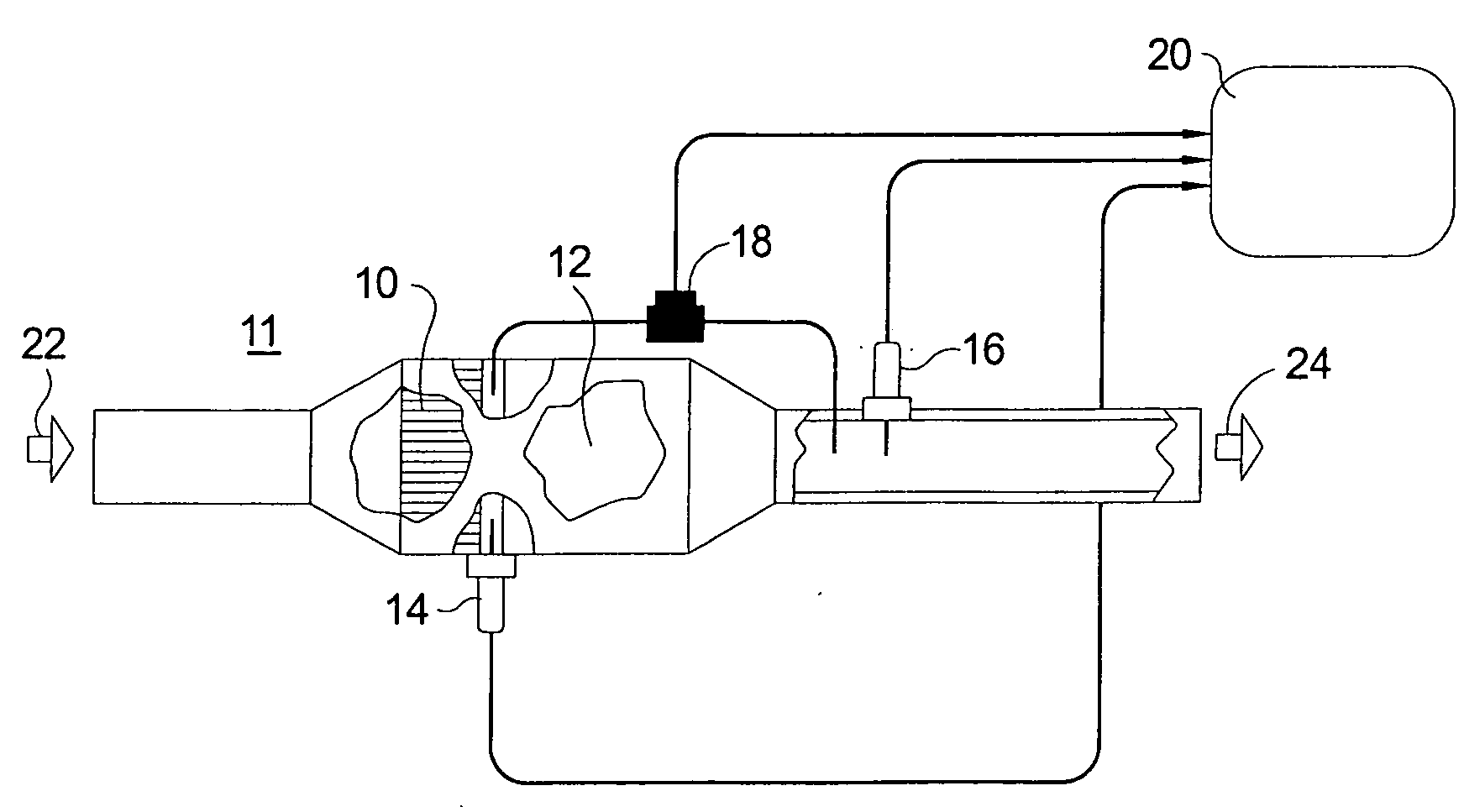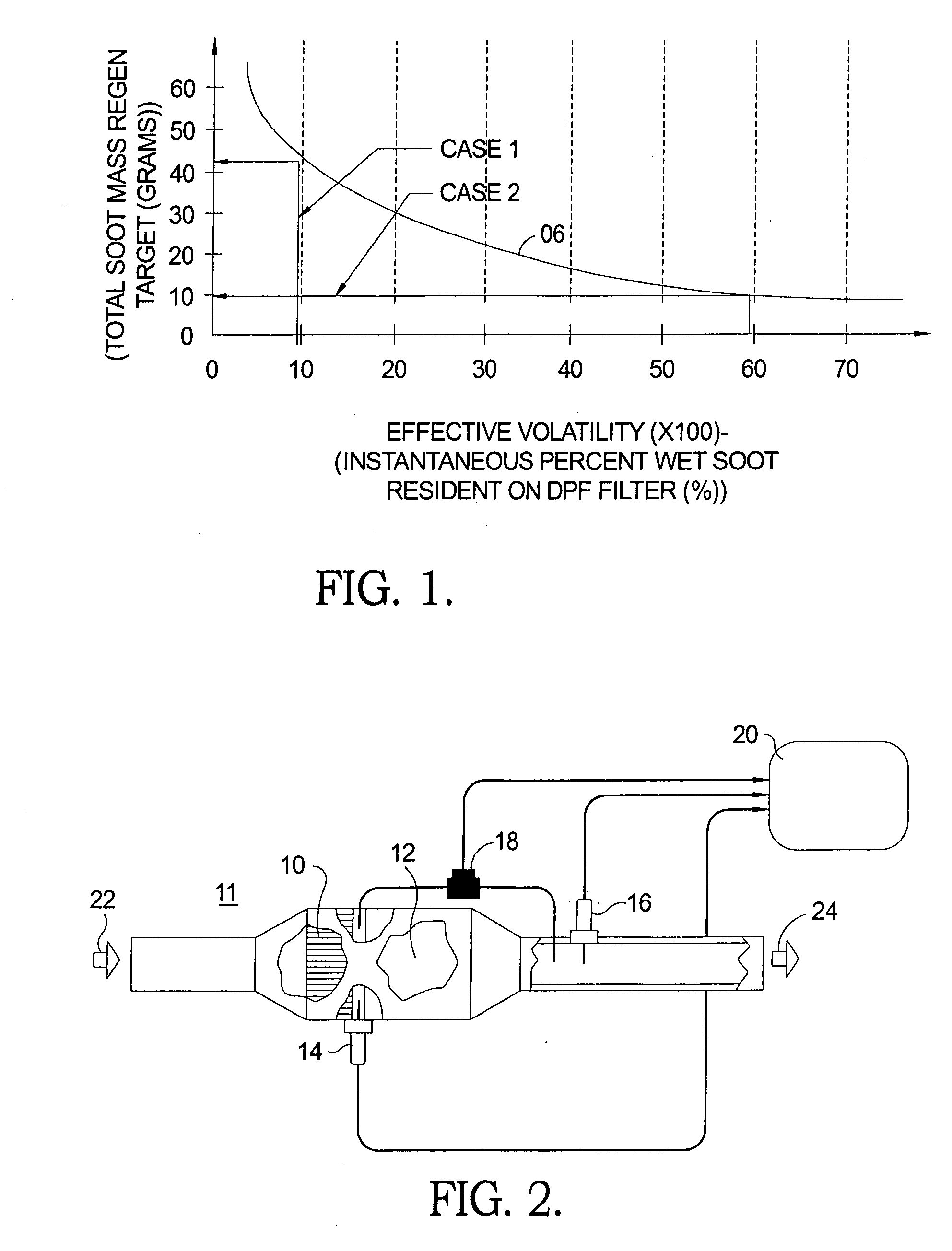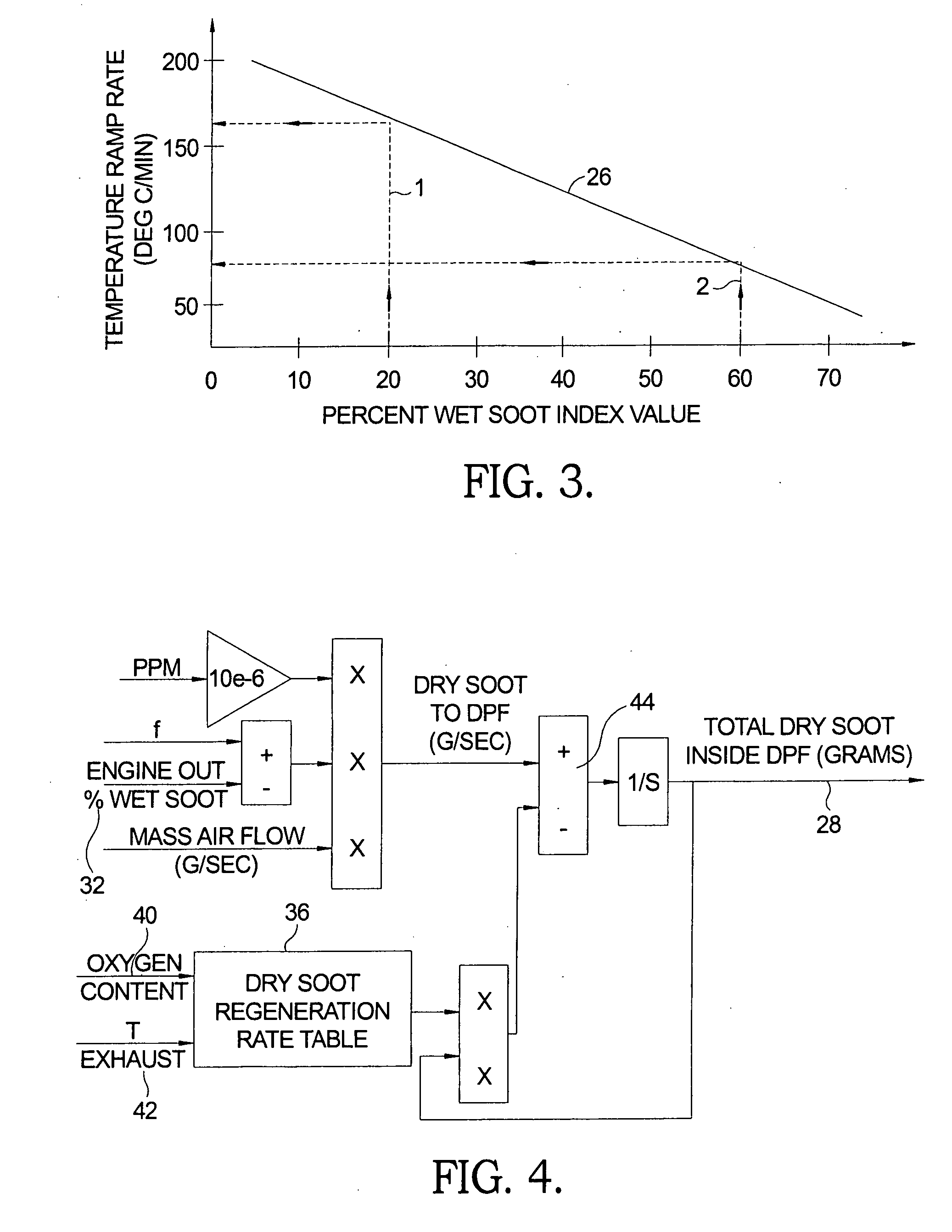Method for controlling catalyst and filter temperatures in regeneration of a catalytic diesel particulate filter
a technology of catalyst and filter temperature, which is applied in the field of regenerating a catalytic diesel particulate filter, can solve the problems of affecting the efficiency of diesel engines
- Summary
- Abstract
- Description
- Claims
- Application Information
AI Technical Summary
Benefits of technology
Problems solved by technology
Method used
Image
Examples
example a
[0045]At the initiation of regeneration, the fuel PID of FIG. 6 begins commanding the introduction of post combustion fuel injection to produce hydrocarbons required to heat up the DOC 10 (FIG. 2) to the current time step calculated regeneration Target Temperature 62 (FIG. 6), which is based on the existing DPF inlet temperature 68 (FIG. 7) at the time of initiation and is increased by the sum of all the products of the ensuing time steps times the temperature ramp rate depicted in FIG. 9, the Mode Line Index. From this process, it can be determined for Profile A that the engine operating condition is stable from regeneration initiation at time zero until time period 250 seconds (A1), increasing at a rate corresponding to slope “x” (Mode Line 5, ramp rate=0.90 degrees / sec). The regeneration Target Temperature used for PID control is now approximately 225 degrees. At this point, the operating conditions of the engine and remaining wet soot fraction are such that the control logic rec...
PUM
 Login to View More
Login to View More Abstract
Description
Claims
Application Information
 Login to View More
Login to View More - R&D
- Intellectual Property
- Life Sciences
- Materials
- Tech Scout
- Unparalleled Data Quality
- Higher Quality Content
- 60% Fewer Hallucinations
Browse by: Latest US Patents, China's latest patents, Technical Efficacy Thesaurus, Application Domain, Technology Topic, Popular Technical Reports.
© 2025 PatSnap. All rights reserved.Legal|Privacy policy|Modern Slavery Act Transparency Statement|Sitemap|About US| Contact US: help@patsnap.com



